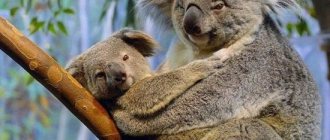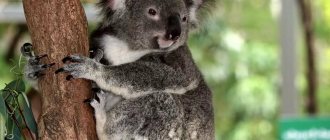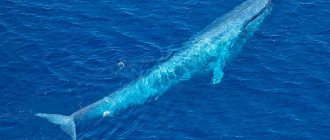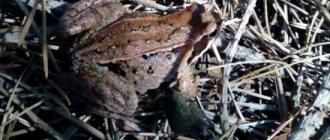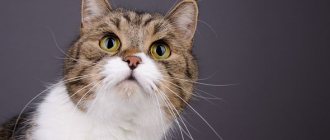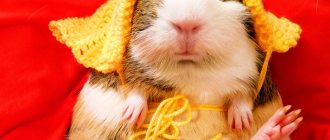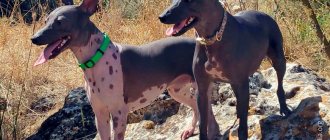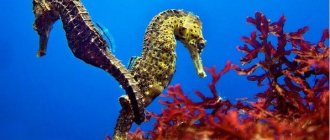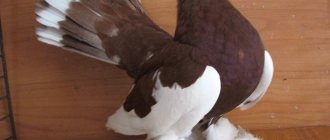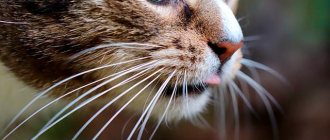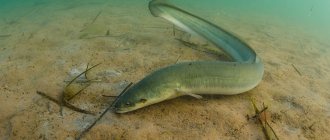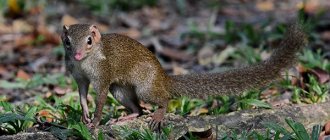Ecology
Australia is famous for its unique wildlife
: living creatures live here that are not found anywhere else in the world.
Some of the most amazing creatures that have survived in Australia are animals of the infraclass marsupials
.
Marsupials first appeared in what is now South America
, however, they were later replaced by animals of other groups.
Today there are very few of them left. The only marsupial creature that managed to survive in North America and survive to this day is the Virginia opossum
.
Marsupials of Australia
Baby marsupials
Marsupials, as their name suggests, are distinguished by the presence of a special pouch
, in which newborn offspring are carried. The cubs are born underdeveloped and must spend some time in the mother's pouch.
The embryos of vertebrates have a general order of development, that is, at some stage the embryos of mammals, fish, reptiles and birds
very similar.
The internal organ systems develop first, then the limbs. In marsupials, the order of growth is somewhat different: they first develop limbs
, which are necessary so that the baby can move into the mother’s pouch, where its development continues.
This premature birth of offspring is unique among mammals.
, as it gives them one more property: an underdeveloped baby is able to breathe through the skin.
For example, a baby Douglas marsupial mouse
is born 12 days after conception.
The baby's lungs are completely undeveloped, so he receives oxygen through his own skin
. After three weeks in his mother's pouch, his lungs have developed enough to breathe normally.
Wombats
Wombats, marsupial herbivorous mammals, burrow and underground caves with many passages and branches at a depth of up to 3.5 meters. In the animal world today, these are the largest mammals, spending most of their lives underground. Externally, wombats look like small bears, measuring about 1 meter and weighing up to 45 kg. They have the smallest number of teeth among marsupials, only 12. Natural enemies are only the Tasmanian devil and dingo. Having very thick skin on the back of the body and a kind of shield on the pelvic bones, wombats protect their shelter by simply sticking their butts out at the entrance. Even at the moment of danger, they butt their heads, inflicting serious blows or crushing enemies against the walls of their cave.
Marsupial bear
Strange sounds of koalas
Male koalas produce peculiar sounds reminiscent of grunting
. It was believed that these sounds helped scare away other male competitors from the territory. The researchers used a GPS device to monitor the animals' behavior and their reactions to different sounds.
It turned out that the strange grunting is actually produced by males to attract females.
and not to scare off competitors. Baby koalas can also make certain sounds when separated from their mother that allow her to find them.
Danger from bacteria
The number of koalas in Australia is declining. There are several reasons for this: loss of habitat, dog attacks, death under the wheels of cars. However, the biggest threat to koalas is chlamydia bacteria.
. In some areas of the country, up to 90 percent of koalas are infected with chlamydia and this disease is very dangerous. It can deprive animals of their vision, lead to infertility and even death.
Koalas can be cured with antibiotics, just like humans. There are special hospitals for animals where they are provided with appropriate treatment
, however, it is very difficult to control the spread of the disease. Animals are highly vulnerable to this disease, and scientists cannot understand why.
Today, researchers are busy studying the immune system of koalas and trying to decipher their genome. There are successful attempts to protect animals from the spread of the disease, vaccines are being developed
.
Feathered representatives of the southern continent
Birds in Australia also have a diverse and vibrant community. Among the most famous and exotic are:
- Gould's finch;
- helmeted cassowary;
- emu and others.
Gould's finch
Gould's finch is a small colorful bird, barely reaching 13 cm in size. Its colors include yellow, green, purple, blue, red and black.
Gould's finch is a constantly migratory bird
Helmeted cassowary
The helmeted cassowary is a bird whose size is not inferior to the largest bird - the ostrich. The bird got its name because of the growths on its head that resemble a helmet. The cassowary grows up to 2 meters in height and weighs 60 kg. The bird is considered potentially dangerous to humans because it can attack. This is a very active bird, it can jump to its height, swim and run at a speed of 50 km/h. Since there are just over 1,200 individuals left in the wild, the helmeted cassowary is included in the Red Book.
Red Book bird - Australian helmeted cassowary
Ostrich Emu
The emu is considered one of the unofficial symbols of Australia. Emus are classified as birds, although the ostrich does not fly. It moves with the help of strong legs equipped with three fingers. The speed that the ostrich develops is similar to the permitted speed of cars in cities - up to 48 km/h. Such an impressive animal has small vestigial wings. Wings are used when running to stabilize the position of the body. Emu ostriches live almost throughout the entire continent.
The emu is a bird that walks 30 km every day
Marsupial kangaroo
Kangaroos live not only in Australia
To see a wallaby
a population of 60 of these animals has lived
Loch Lomond since the 1940s .
They are very popular among tourists, but conservationists fear that the animals will eventually destroy all the local vegetation, which the local animals also feed on.
In the UK, wallabies can also be found in the south of England
.
The animals were released in the 1940s when authorities banned private zoos. This population numbered about 50 individuals
until the harsh winter of 1963 reduced it by half.
Gradually the number of wallabies sleeping in the south of England began to fall. In 2009
saw the last representative. A similar population of wallabies lived in Hawaii, but it has most likely disappeared there as well.
Animals are drug addicts
Koalas are often accused of getting drunk on their diet.
, which consists of the leaves of eucalyptus trees, but this is just a myth.
These animals are so lazy that they seem to be “drugged.” The real “drug addicts” among marsupials are Tasmanian kangaroo wallabies .
The island of Tasmania is the world's largest producer of poppy, which is used to make legal opiates.
. Hundreds of thousands of hectares of these plants attract the attention of local jumping creatures - kangaroos.
They chew poppy seeds, after which they remain in a narcotic haze all day. The beast, while high, is unable to move in a straight line, but makes crop circles
.
Raising other people's children
Availability of bag
- a mandatory characteristic of marsupials. It is half womb, half cradle, in which the born baby lives for some time. The mother's pouch is an important means of protection for the offspring.
Scientists were quite surprised when they noticed that the cubs of a completely different mother could hide
. What’s even stranger: the second female was not at all against “borrowing” her child. That is, kangaroos exchange their own children without a second thought and quite voluntarily.
This is the first time this type of behavior has been recorded in the wild, although it sometimes happens in captivity. By the way, if someone else’s baby gets into the bag, it remains there forever
, that is, the female takes care of other people's offspring as if they were her own.
enemies are nearby.
: in a fit of panic, they simply cannot distinguish their own children from strangers, so if you see a baby kangaroo in a female’s pouch, this does not mean at all that it is her own baby.
Why were they here?
One idea is that in times of hardship, marsupial mothers might have discarded any developing baby they were carrying in their pouch, while other mammals had to wait until pregnancy ended, wasting precious resources on their young.
Another idea is that there were no placental mammals competing with marsupials in Australia. But this idea is now contradicted by a tooth belonging to a placental mammal or its relative discovered at Tingamarra. This indicates that placental mammals were on the continent as early as 55 million years ago.
Australian marsupials
Marsupials with lizard-like features
In the Australian state of Queensland
The fossilized remains of strange ancient creatures were discovered: an unknown to science marsupial the size of a ferret, which later received the name Malleodectes.
The teeth of this strange animal were unique; no other mammal has anything like it
.
It had one large, blunt tooth on each side of its upper jaw, which was shaped like a hammer. Teeth can tell a lot about nutrition, but what could this strange creature eat?
Scientists from the Queensland Museum
noticed that the teeth of this creature resemble the teeth of an Australian lizard of the
skink
(pictured).
This lizard uses these hammer teeth to crack the shells of snails
.
The newly discovered creature has nothing in common with the lizard: both creatures developed such features completely independently of each other
. Apparently, the ancient marsupials also really liked to feast on snails.
Koala
photo source
The koala lives in trees and feeds on eucalyptus leaves and shoots; has a large nose and ears. With the help of tenacious paws, koalas deftly climb trees, while the cubs hold on to their mother’s back. Inhabits eucalyptus forests in the southern and south-eastern regions of Australia. Solitary animal, but male and female territorial ranges may overlap.
Marsupial animal
The rarest marsupial
Gilbert's potoroo is considered the world's rarest marsupial.
from the
kangaroo rat
.
For about 120 years
, the animal was considered extinct until
1994
about forty of these rodent-like creatures were discovered in one of the Australian reserves near the city of
Albany, Western Australia
This area was supposed to be settled, but Prince Philip
, husband of Elizabeth II, campaigned to protect these areas and protect rare birds.
For example, the noisy bushbird
, once native here, was also thought to be extinct until
its representative was discovered in 1961
Potoroo Gilbert
is still seriously endangered.
Conservationists have created opportunities to breed these animals in captivity
to increase their numbers and protect them from predators. Some of them are released into the wild.
Researchers hope to learn more about these rarest animals in the world
and find them other suitable places to live where they have a better chance of survival.
They feed on poisonous leaves
0
You already know that koalas spend a lot of time sleeping, the rest is spent on food, namely on eating shoots and leaves of poisonous eucalyptus. In addition, the leaves are also very hard. Bacteria help koalas digest them. After receiving mother's milk, koalas do not yet have the necessary bacteria in their bodies, so at first the babies feed on their mother's droppings. Thus, they receive semi-digested eucalyptus leaves and microbiota - it does not take root in the intestines immediately, but gradually.
Marsupial mammals
Transoceanic relatives of marsupials
As already mentioned, marsupials originated in South America. One of the species arrived in Australia approximately 55 million years ago.
and is the ancestor of all modern Australian marsupials, including
koalas, kangaroos and wombats.
This first marsupial resembled a mouse and was called
dzhartiya.
As it turns out, the early descendants of the Jartiyas could return to South America. Small mountain monkey - bell
is a tree-climbing marsupial that lives today in the mountain forests of Chile and Argentina.
Scientists have suggested that the creature is more closely related to the marsupials of Australia
than to those found in South America. The fossilized remains of dzhartiyas, found in 2008, confirm this assumption.
Koalas
Marsupial bears (koalas) are herbivorous mammals that live exclusively in trees. Some of the most recognizable Australian animals. Cute charming animals, extremely slow, which is caused by the consumption of low-protein food. They deftly climb tree branches and can jump from one eucalyptus tree to another. They descend to the ground just to move to another tree, they know how to swim. Koalas have a characteristic feature - they have a papillary pattern on their fingertips, like a human. Modern koalas have one of the smallest brains in terms of volume among marsupials; the ancestors of koalas had a much larger brain volume.
Australian marsupial
Paper made from marsupial feces
Animals mark their territory in a variety of ways. The most common way is to urinate to leave a scent, but wombats
prefer to leave small
piles of their feces
wherever they see fit to ward off other animals: excrement can often be found on rocks, on logs and even on mushrooms.
The problem is that round shaped feces can easily roll away and get lost.
. To solve this problem, wombats have learned to defecate not in balls, but in... cubes.
They can produce 4-8 of these cubes
during one bowel movement, and leave them approximately at the height of the nose so that competitors can easily notice them. Wombat feces are covered with sticky mucus and have a specific sweet smell.
By the way, wombat feces are used in industry. One Australian company that produces souvenirs turns them into paper.
. At first they made paper from kangaroo excrement, but then switched to raw materials from other marsupials. Animal feces are boiled and then processed into pulp.
